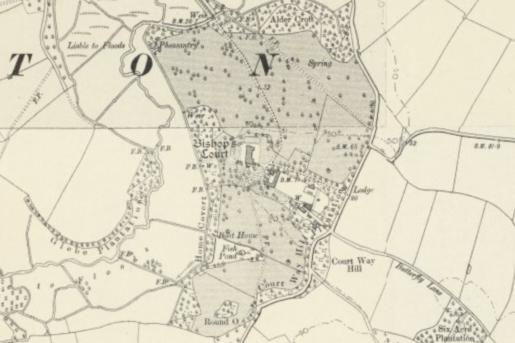- Parkland
- C19
An intensely Gothic mansion remodelled by William White in1860-4; a transformation of a house of c.1800 which itself incorporated remains of the most important medieval country residence of the bishops of Exeter (acquired in1265 and used by them until 1546). The Pleasure Garden was, according to Mrs Price in 1805, in its ‘infant state’ but it did have an avenue of elms which formed an arch. White (1850) noted that the house is a commodious building , pleasantly situated on a commanding eminence, in a well wooded park, on the east bank of the small river Clyst. Stockdale described it as ’an elegant spacious Gothic structure chiefly composed of the materials of the ancient palace…… the approach is formed by a beautiful avenue of trees, which, with the surrounding plantations have been much improved. A new Gothic lodge has also been erected.’ When the property was sold in 1833 it had its own pheasantry and aviary, together with a commodious covered summer-house, melon and cucumber beds, fruit trees and an orchard, as well as a rookery of noble beeches, elms and oaks, mingled with limes and chestnuts.
Bishop’s Court listed Grade I ; Tithe barn 150m. to south east and adjoining stable block listed Grade I
Railings of bridge over River Clyst 450m.south south west of Court Lodge on former drive to Bishop’s Court listed Grade II.
Cherry & Pevsner: The Buildings of England – Devon, 1989: 181
S Pugsley: Devon Gardens – An Historical Survey, 1994: 138
T Gray: The Garden History of Devon, 1995: 46-7
T Gray: Devon Country Houses and Gardens Engraved Vol I, 2001: 28-9

